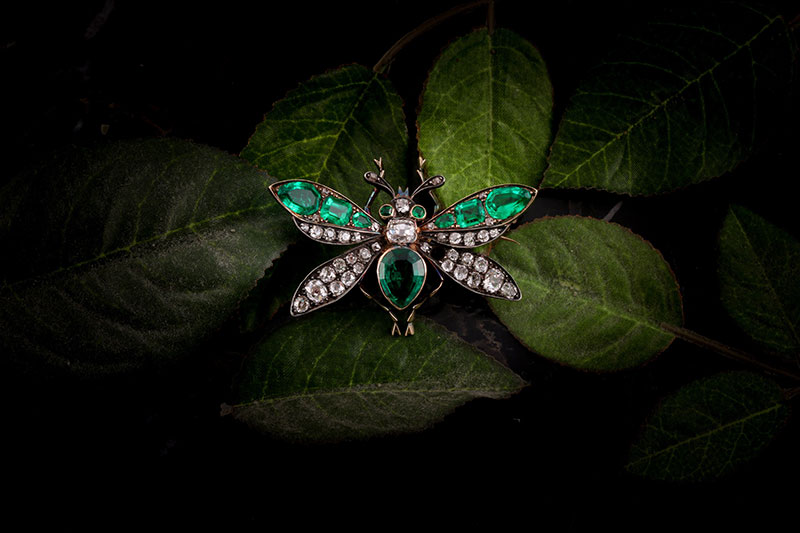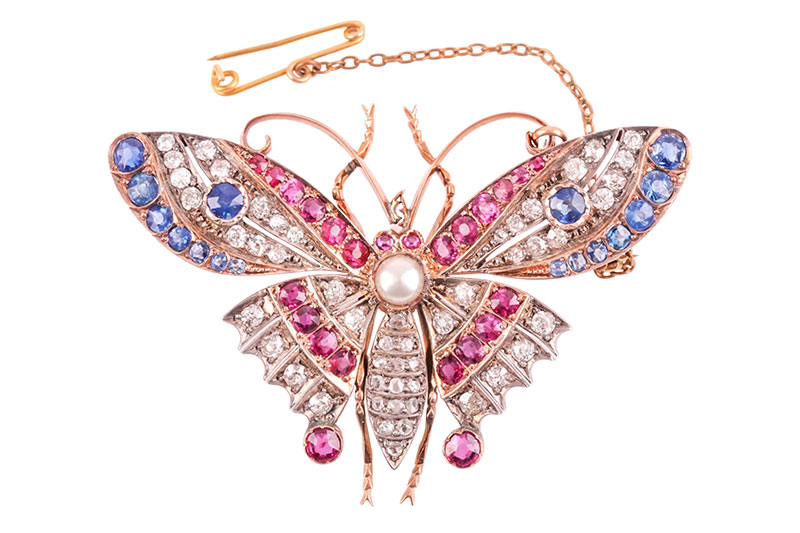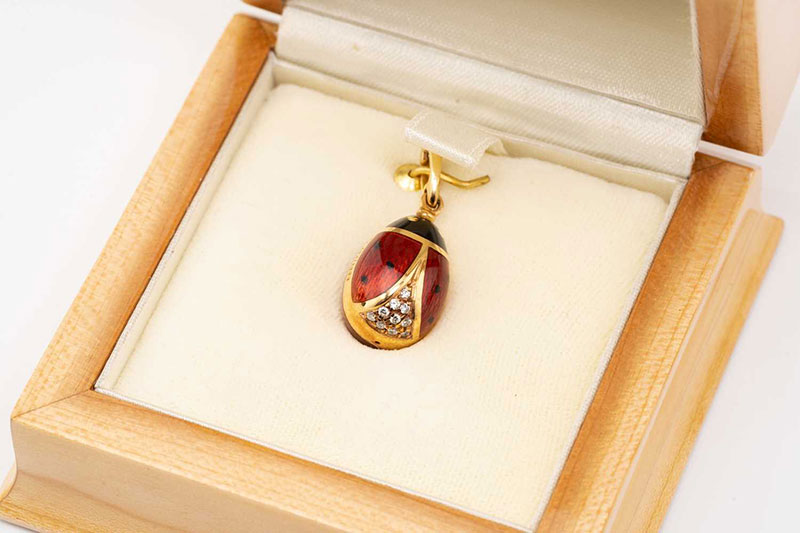When was insect jewellery popular?
The era of exploration spawned the Victorian’s fascination with the natural world
19/02/2025
Ancient Egyptians believed that wearing depictions of insects such as the scarab beetle, as talismans or jewellery, would provide protection from evil spirits and endow good luck on the wearer.
However, it was with the age of discovery, science and travel that came with the Industrial Revolution, that insect jewellery’s popularity peaked. The era of exploration spawned the Victorian’s fascination with the natural world, and the fantastical shapes and colours of the newly discovered species captured designers’ imagination, which was reflected in the fashion and jewellery of the time.
A Victorian diamond and emerald insect brooch
Queen Victoria’s personal interest in nature and her love of jewellery was a significant influence on fashion and culture. Intricate, life-like depictions of insects were popular amongst the upper classes and the fashion subsequently filtered down to the middle classes who had newly acquired wealth to spend on status enhancing jewellery.
The depictions of beetles, dragonflies, moths, and bees incorporated colour from gemstones such as emeralds, sapphires, rubies, and pearls which were used to emulate insect bodies while techniques in enamelling mimicked the lustre and iridescence of insect wings and beetles. The era saw innovations in metal working and gem cutting which made the pieces more detailed and realistic. Some makers went one step further and set their pieces ‘en tremblant’ or set on a tiny spring so that when the wearer made a movement, so did the insect, looking incredibly lifelike and adding another layer of realism. The finishes and the craftsmanship involved made these luxury brooches, rings, and pendants unusual and very desirable.
A diamond, ruby, and sapphire butterfly brooch
Fashion for insect jewellery continued to the 1920s when archaeological exploration centred around Egypt and the scarab beetle became a popular motif in the structured and symmetrical art deco style.
Fashions come and go, but Victorian and early 20th Century Insect jewellery remains popular, in part thanks to Alexander McQueen and his ‘darkly romantic’ aesthetic which saw pieces of exceptional craftsmanship with a macabre twist adorning his collections.
Today, designers such as Cartier, Boucheron and Dior are using insects and bugs as inspiration in their jewellery collections and this enduring interest has ensured that there is still a vibrant collectors’ market for the Victorian pieces.
Fabergé - a ladybug pendant set with ten brilliant-cut diamonds
Dawsons in-house team’s ability to bespoke market wonderful jewellery to a global audience of up to 10 million potential buyers means that your heirloom piece of insect jewellery can be targeted at potential buyers across the world and ensure that bidding is competitive at our monthly fine jewellery sales.
Recent successes include a Victorian diamond and emerald insect brooch in the form of a fly, set with diamonds and emeralds which sold for £15,000, far in excess of the £6,000 starting price.
read more
What is Etruscan Revival Jewellery?
Is There a Market for Vintage Jewellery?
Which Jewellery Brand Has The Highest Resale Value?

Nicky Houston
Our Head of Department - Jewellery, Silver & Watches... Nicky is a highly respected Auctioneer & Valuer, who had dreams of becoming an artist. Whilst she may not have made it as a successful artist herself, Nicky has helped many a customer to successfully sell and buy beautiful pieces of jewellery and works of art over her many years working within the auction industry.
Jewellery Silver & Objects of Virtue Watches
Are you thinking of selling any insect jewellery?
With a global audience of more than 10 million known bidders, Dawsons can secure the highest prices.
Get in touch with an expert Valuer for confidential sales advice, we would be delighted to help you:


